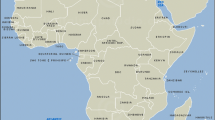Abstract
The study aims at developing a process to evaluate the impacts of the accidental emission of hazardous chemicals. The proposed process consists of four basic steps: i) identifying risks/hazards; ii) development of the worst-case scenario; iii) simulating the emission and dispersion of the toxic chemicals; and iv) assessing the severity of the impact to the people and the surroundings. It makes use of different techniques including accidental release source term, atmospheric dispersion modeling and results in the concentration and extent of the toxic chemicals in the atmosphere for either the direct evaporation of toxic chemicals as a primary emission or the dispersion of toxic chemicals as a domino effect of a fire or explosion accident. This process has been applied in a contrived case study in Ho Chi Minh City, Vietnam. In a suppositious accident of p–xylene spill from a pesticide factory, the assessment for the worst-case scenario showed that p–xylene concentration in the atmosphere could reach up to 8,882,381 µg/m3, that is higher than Protective Action Criteria for Chemicals–level 2 but far lower than the level 3. p–Xylene from the accident could disperse more than 20 km from the site, to a highly populated area with a large number of sensitive social economic object. The results of this assessment provide helpful information for the development of accidental response plan in the practical cases or supports the training for accident prevention and responses.






Similar content being viewed by others
References
AERMIC (2015) AERMOD Modeling System. American Meteorological Society/Environmental Protection Agency Regulatory Model Improvement Committee (AERMIC), North Carolina, USA
DMI (2010) Theme−10 Guide to the District Collector: What I Must Know as District Collector? and Why? industrial Disaster Risk Management. Disaster Management Institute (DMI), Bhopal, India
Do TTH (2017) Development of an assessment process for environmental incidents from the emission of hazardous chemicals, case study in Ho Chi Minh City. Institute for Environment and Resources, Vietnam National University–Ho Chi Minh City, Ho Chi Minh City, Vietnam
Do TTH, Nguyen TM, Ho QB, Ly TBT (2016) Evaluation of environmental impacts from an accidental release of hazardous chemical in industry. In: Nguyen VP, Ho MD (eds) Proceeding of the International Conference 2016 ICENR–ILTER–EAP. Ecological Insights and Environmental Protection for Sustainable Development under Climate Changes in East–Asia and Pacific Region. Institute for Environment and Resources, Vietnam National University, Ho Chi Minh City, Vietnam, pp 235–242
EMI SIG (2012) Protective Action Criteria for Chemicals–Including AEGLs, ERPGs, & TEELs. Emergency Management Issues Special Interest Group, USA. http://www.atlintl.com/DOE/teels/teel.html. Accessed 3 Nov 2014
Ho Chi Minh City Statistical Office (2016) Ho Chi Minh City Statistical Yearbook 2015. Statistical Publishing House, Ho Chi Minh City, Vietnam
Ho QB (2015) Estimation of air pollutants dispersion from Thanh Cong Textile Company, Ho Chi Minh City. Institute for Environment and Resources, Vietnam National University, Ho Chi Minh City, Vietnam
I Y-P, Shu C-M, Chong C-H (2009) Applications of 3D QRA technique to the fire/explosion simulation and hazard mitigation within a naphtha-cracking plant. J Loss Prev Process Ind 22:506–515. https://doi.org/10.1016/j.jlp.2009.04.002
Jones R, Lehr W, Simecek-Beatty D, Bañares-Alcántara R (2013) ALOHA® (Areal Locations of Hazardous Atmospheres) 5.4.4: Technical Documentation. Emergency Response Division, NOAA, Washington, D.C, USA
Junier M (2004) Gas phase chemistry mechanisms for air quality modeling: generation and application to case studies. Dissertation, École Polytechnique Fédérale de Lausanne, Lausanne, Switzerland
Mitchell Scientific Inc., RTI International (2007) Methods for estimating air emissions from chemical manufacturing facilities. In: Emission Inventory Improvement Program, US Environmental Protection Agency, USA
Nguyen TC (2013) Study on the impact of air pollution on the surrounding areas of Thi Vai river basin. Master thesis, Institute for Environment and Resources, Vietnam National University, Ho Chi Minh City, Vietnam
OECD (2013) 25 years of chemical accident prevention at OECD-History and Outlook. Organization for Economic Co-operation and Development (OECD), Paris, France
ORR (2016) Toxic Level of Concerns. Office of Response and Restoration (ORR), USA, http://response.restoration.noaa.gov/oil-and-chemical-spills/chemical-spills/resources/toxic-levels-concern.html Accessed 1 Jul 2016
OSHA (2012) Chemical Sampling Information/Xylene. United State Department of Labor–Occupational Safety and Health Administration (OSHA). https://www.osha.gov/dts/chemicalsampling/data/CH_276400.html. Accessed 11 Jan 2017
Policastro A, Roglans-Ribas J, Marmer D et al (1994) Hazardous waste storage facility accident scenarios for the U.S. Department of Energy Environmental Restoration and Waste Management Programatic Environmental Impact Statement. In: WM’94 Conference. Arizona, USA
Stenzel S, Baumann-Stanzer K (2010) Dispersion modeling of accidental toxic gas releases–A model comparison study. In: HARMO13, Paris, France
Truong SCH, Lee M-I, Kim G et al (2016) Accidental benzene release risk assessment in an urban area using an atmospheric dispersion model. Atmos Environ 144:146–159. https://doi.org/10.1016/j.atmosenv.2016.08.075
US EPA (1997) Volume VII: Accident analysis: selection and assessment of potential release scenarios. U.S. Environmental Protection Agency (US EPA), Ohio, USA
van der Voort MM, Klein AJJ, de Maaijer M et al (2007) A quantitative risk assessment tool for the external safety of industrial plants with a dust explosion hazard. J Loss Prev Process Ind 20:375–386. https://doi.org/10.1016/j.jlp.2007.04.024
VN EPA (2014) Technical guidance for risk assessment of hazardous chemical release in industrial sectors. Vietnam Environmental Protection Agency (VNEPA), Ha Noi, Vietnam
Zhang H-D, Zheng X-P (2012) Characteristics of hazardous chemical accidents in China: A statistical investigation. J Loss Prev Process Ind 25:686–693. https://doi.org/10.1016/j.jlp.2012.03.001
Acknowledgements
This research is funded by Vietnam National University of Ho Chi Minh City (VNU–HCM) under grant number C2016-24-03. It is also a preliminary study for the project number 48/2017/HĐ–SKHCN entitled “Development of environmental accident preparedness and response plan for the industrial zones and export processing zones in Ho Chi Minh City” funded by the Department of Science and Technology of Ho Chi Minh City, Vietnam.
Author information
Authors and Affiliations
Corresponding author
Ethics declarations
Conflict of interest
The authors declare that they have no conflict of interest.
Rights and permissions
About this article
Cite this article
Huyen, D.T.T., Tram, L.T.B. Development of a Procedure for Evaluating the Impacts of the Accidental Emission of Hazardous Chemicals, Case Study in Ho Chi Minh City, Vietnam. Environmental Management 63, 486–494 (2019). https://doi.org/10.1007/s00267-017-0979-0
Received:
Accepted:
Published:
Issue Date:
DOI: https://doi.org/10.1007/s00267-017-0979-0




